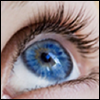Can Creativity Be Increased?
January 11, 2010 by Quantum Publisher
Filed under Creativity
Increase Your Creativity
There is strong evidence that certain strategies definitely increase creative output. These strategies include…
Strategy 1. Embrace Your Problems
One of the most fundamental skills of creativity is the ability to recognize an opportunity and seize it. You have countless opportunities to expand your creative thinking skills. Such opportunities present themselves daily at home, while driving to work, during meetings or lunch – or while just hanging out with friends. There’s really no shortage of opportunities to refine and develop your creativity. The most basic approach is to recognize that a problem  may actually be a golden opportunity for a creative explosion – and seize the moment.
Strategy 2. Challenge Your Creativity Assumptions
It’s natural and necessary to make assumptions about the reality of our everyday world. We would otherwise spend all of our waking hours performing unnecessary mental analyzes of ordinary things. As a result, many times we see only what we expect to see. Our analysis of a situation or a problem is based entirely on assumptions based on our past experience or accepted knowledge. Plus assumptions can become so entrenched it doesn’t cross our mind to challenge them.
A problem may arise simply because we perceive a situation or condition through a set of false assumptions preventing clear thinking. Challenging your assumptions is an important component of creativity. This allows you to look beyond what is obvious or already accepted. And it leads straight to the creative breakthroughs you’re looking for.
Truly creative people in all fields of interest tend to automatically challenge both their own assumptions, and the commonly accepted knowledge about a problem. This mental attitude is the true source of all of the world’s great inventions and businesses. The moment you choose to challenge one of your assumptions as possibly untrue or incomplete,” you are on the way to discovering something new and different.
Strategy 3. Take Some Creativity Risks
A willingness to take risks is at the very heart of creativity. No creative person succeeds without first failing – as failures are part of the process of testing one’s assumptions. There is simply no creativity without failure.
To experience major creative breakthroughs, it’s important to become comfortable taking risks. Each failure you encounter will actually supercharge your creativity by generating new information. If you’re unwilling to take risks and deal with what ordinary people call failure, then you cannot expect to become a great creative thinker.
Modern neuroscience has shown that our brains are literally rewired each time we learn something new by making a mistake. The brain is designed to learn through the trial and error process.
Strategy 4. Use Alternative Thinking
To come up with a creative idea, you will often need a new vantage point. Creating a new solution to an existing problem, for example, may require looking at the problem from a fresh perspective.
There are many tools used by creative thinkers to create such a fresh perspective, including: Brainstorming, MESV creative visualization, and various other means of considering the problem from a fresh vantage point.
Additionally, a great way to kick start your creativity is to look at your problem from the vantage point of another profession. If you are a mechanical engineer, for example, how would an architect view your problem? Or if you are a product designer, how would an interior decorator approach your problem? This approach can lead to some remarkable creative breakthroughs.
Strategy 5. Accept Ambiguity
Many people prefer that everything be clear and unambiguous. They are uncomfortable with anything that seems vague, or could have more than one meaning or application. As a result they tend to be rigid, highly predictable thinkers.
A touch of ambiguous thinking during the idea generation stage of the creative process has the power to bring out genius-level ideas. People who can think ambiguously are fluid and flexible thinkers. The ability to think ambiguously can yield amazing creative insights. This is ability is experienced (and built) when you indulge in wordplay or humour.
Strategy 6. Expand Your Vision
An excellent way to build your creative muscles is to read and explore outside your normal area of interest. This can be especially useful when you are struggling to solve a creative problem.
Strategy 7. Massage your brainwaves
Creative thinking best occurs when your brain is in certain states called alpha and theta. You are in an alpha/theta state when your brain is producing a predominance of slower brain-waves, as opposed to the faster beta brain-waves associated with normal waking consciousness.
Alpha /theta brain-waves are the reason many people have creative ah-ha experiences during a nap, a stroll, or some other mentally-relaxing activity. But consciously entering into an alpha/theta state can be a challenge. Meditators spend years learning to initiate this state on will, but modern technology has introduced a much faster method of building alpha/theta expertise – Self Growth Planet. Be sure to check it out – your creativity will never be the same. Incidentally, a great side benefit of entering into the alpha/theta brain-wave state is virtually instant stress reduction.
Supercharge Your Brain
The one thing that robs you of creative energy more than anything else is stress. Bust your stress and you will raise your IQ, develop clear mental focus, study and learn better, and increase your creative output. Get Creative
Posted by Jill Ammon-Wexler
Amazing Solutions
Light Your Creative Spark
June 1, 2009 by Quantum Publisher
Filed under Life Mastery
 Sudden ah ha insights are an ultimate source of creativity. Imagine if YOU could learn to summon them at will.
Sudden ah ha insights are an ultimate source of creativity. Imagine if YOU could learn to summon them at will.
What happens in your mind when you get a sudden ah ha creative insight? When a light bulb seems to go off in your mind, and you suddenly just know the answer to a question or problem?
Such creative insight almost always comes suddenly, according to psychologist Jonathan Schooler of the University of Pittsburgh.
When you solve a problem in a methodical way, you usually know whether or not you’re coming close to a solution.
But with insight-type problems, most people have no clue when they are about to get a solution, Schooler explains. The solution almost seems to be delivered to you.
 Ah Ha Insights Unveiled
Science is yielding new insight into this ultimate form of creative thinking. And these insights can help YOU increase your creativity. Psych professor John Kounios of Drexel University and Mark Jung-Beeman of Northwestern University are studying ah ha insights using high tech equipment.
The researchers are asking people whether their answers to a complex word puzzle just popped into their heads or if they used a more systematic approach to coming up with their solution. While all this is going on, the people are hooked up to EEG and fMRI machines to monitor their brains.
The EEG measures the when, Kounios explained, it records patterns of brainwave activity over time.
The fMRI, a brain imaging device, on the other hand, measures the where. It takes a picture showing which spots in the brain get the most blood flow  indicating they are more active during a given task.
The researchers discovered some surprising brain activity patterns occur at the moment the right answers just pop into one’s mind as a sudden insight.
The EEG showed a burst of brain activity in the right hemisphere about a third of a second BEFORE the research subjects hit a button indicating they had the answer.
The fMRI revealed that a tiny spot in the right temporal lobe just above your right ear lights up when people get an answer through insight. Have you ever noticed you might put your fingertips to your right temple when you’re searching for an answer to a question?
Insightful Precognition
 Chance favours the prepared mind.~~ Louis Pasteur
But then … the researchers discovered something even more remarkable:
Those who would later get the answer with insight had increased brain activity before they even saw the question. This brain state before the problem is presented actually predicts whether the subjects will solve it with insight or not. Kounios said.Â
What happens is those who use insight to solve problems actually put their brains into a state in which they were more likely to have a flash of insight, he explained. It seems these people pulled a chain to turn on their mental light bulbs  just like they show in comic strips.
Here’s Two Clues
Krounos’s results suggest there’s something truly unique about ah ha insights. There’s been this long debate over whether insight is anything special, he said. In his experience, it’s definitely something special.
Clue 1: Psychologist Jonathan Schooler, who has also done insight experiments, found that people have more trouble getting ah ha solutions when they try to talk themselves through the steps. Sometimes it’s better to just shut up, Schooler concluded.
 Humm.
Clue 2: Kounios also reported that insight comes more easily when people don’t try so hard. They let go a little bit, he said. They relax and turn their focus to other things.
The Ah Ha State and Creativity
Like insightful problem solutions, creative ideas in the arts also often seem to come from out of the blue.
In a radio interview ex-Beetle Paul Simon once said he was just fooling around with some chords one day, when suddenly he began to play Bridge Over Troubled Water for the first time. He said it was as if the song just created itself in his brain.
Work like that in Kounios’ lab helps to demystify creativity by connecting it to a very real brain process, Christoff Koch, a neuroscientist at the California Institute of Technology tells us.
I agree.
We’re only conscious of a small fraction of our true brainpower
Insight, creativity, and our other most treasured mental abilities seem to flow out of the subconscious mind and just suddenly burst into consciousness. What a marvel our human minds are.
Entering the Ah Ha Zone
Anyway, it now seems there IS something to the sensation of a light bulb going off in our brain when we get a sudden creative insightful.
Stop and think about the moments you’ve had such experiences. You will likely recall being very relaxed. Einstein claimed to get his greatest creative insights in the shower.
Ask yourself what activities tend to best help you empty your mind? Then get these activities into your life when you’re trying to solve a problem, or get a creative insight.
Here’s a brain smart key: Logical analytical thinking is just the opposite of creative ah ha thinking. Your mind can only do one or the other at a given time.
If you have a particular problem you’re trying to solve, try this approach. First do your logical analysis. Then just let go. Do something totally different and relaxing. Just forget the problem
Allow your subconscious mind to play with the question or problem. Just go about your life, and allow the insight to flash into your conscious mind.
You CAN do this. It’s actually built into your mental hardware.
You’ll recognize it when it comes. That light bulb will flash.
Experience Genius Level Creativity
April 21, 2009 by Quantum Publisher
Filed under Creativity
 Creativity is often viewed as a characteristic of a only few gifted geniuses.
Creativity is often viewed as a characteristic of a only few gifted geniuses.
John Briggs, the author of Fire In the Crucible: The Alchemy of Creative Genius agrees that the way we talk about creativity often reinforces the notion its some kind of special gift. But it’s not.
Truthfully — creativity goes far beyond the ability to paint, write, create a new business, invent a new product, or having a high IQ. When stripped down to its bare essentials, creativity is actually a fundamental survival skill.
Experience Genius CreativityÂ
On an artistic level … creativity is the search for the elusive Ah ha — a brief moment of insight when we suddenly see a problem, or an idea, in an entirely new and fresh way.
It’s true that not everyone can be Beethoven or Picasso or Einstein. But the impulse to breakthrough to a new idea is not limited to artists and geniuses. We each have our own natural creative genius.
But on the everyday level … creativity is actually at the heart of any action that somehow transforms your inner or outer reality. You are actually being creative when you open the refrigerator door and search for the makings of a sandwich.
Why So Few People Feel Creative
Why do so few people manage to consider themselves creative? It’s because most of us were taught to repress our natural desire to challenge the reality of things as they are. You can increase your creativity by simply adjusting how you think about creativity.
Professor Mark Runco, founder of the Creativity Research Journal explains it like this: We put children in groups and make them sit in desks and raise their hands before they talk. We put all the emphasis on conformity and order, then we wonder why they aren’t being spontaneous and creative.
Sound painfully familiar?
Overturning the Genius Myth
Another reason many do not consider themselves creative is the *I’m not a genius* syndrome — the sad assumption that genius level creativity requires a high IQ..
Actually your IQ has little to do with your creativity. David Perkins, co-director of Project Zero at the Harvard Graduate School of Education agrees. Perkins believes we don’t believe ourselves to be creative because we’re often intimidated by the genius myth.
This old myth claims creativity is restricted to high IQ geniuses. But this was actually debunked years ago in a study begun by Stanford psychologist Lewis Terman — the man who adapted the original French IQ test for the USA.
In the early 1920s Terman had California school-teachers select 1,528 “genius” schoolchildren with an IQ above 135. These children’s lives were then followed by a research team for 60 years. After six decades they found that these geniuses had done fairly well. Many were professionals and had stable, prosperous lives. But interestingly… very few had made notable creative contributions to society, and literally none had completed any extraordinary creative work.
According to Dr. Dean Simonton, author of Genius, Creativity and Leadership and Scientific Genius: There just isn’t any correlation between creativity and IQ.
Unleash Your Creative Impulses
To free your natural creative impulses it’s often necessary to resist the pressure to march in step with the rest of the world.
This can be admittedly tough. One place to start is by trying an original way of doing some habitual task. Virtually everything you do can be done in a slightly different, slightly better way … from organizing your paperwork, to washing the dishes. Remember, the essence of creativity is NOT necessarily getting things right. At it’s heart, creativity is based on risk taking. On being willing to make some mistakes.
And here’s a point about mistakes and failure: Many who claim they aren’t creative say this simply because they tried once, and failed. But interestingly, genius level creativity may actually go hand-in-hand with failure. Consider the great creative genius Edison. He held over 1,000 patents. But most of them are forgotten, because they weren’t worth much to begin with.
So don’t let fear of failure stop you from exercising and building your creative muscles.
Want to increase your creativity to genius level? Click here.



